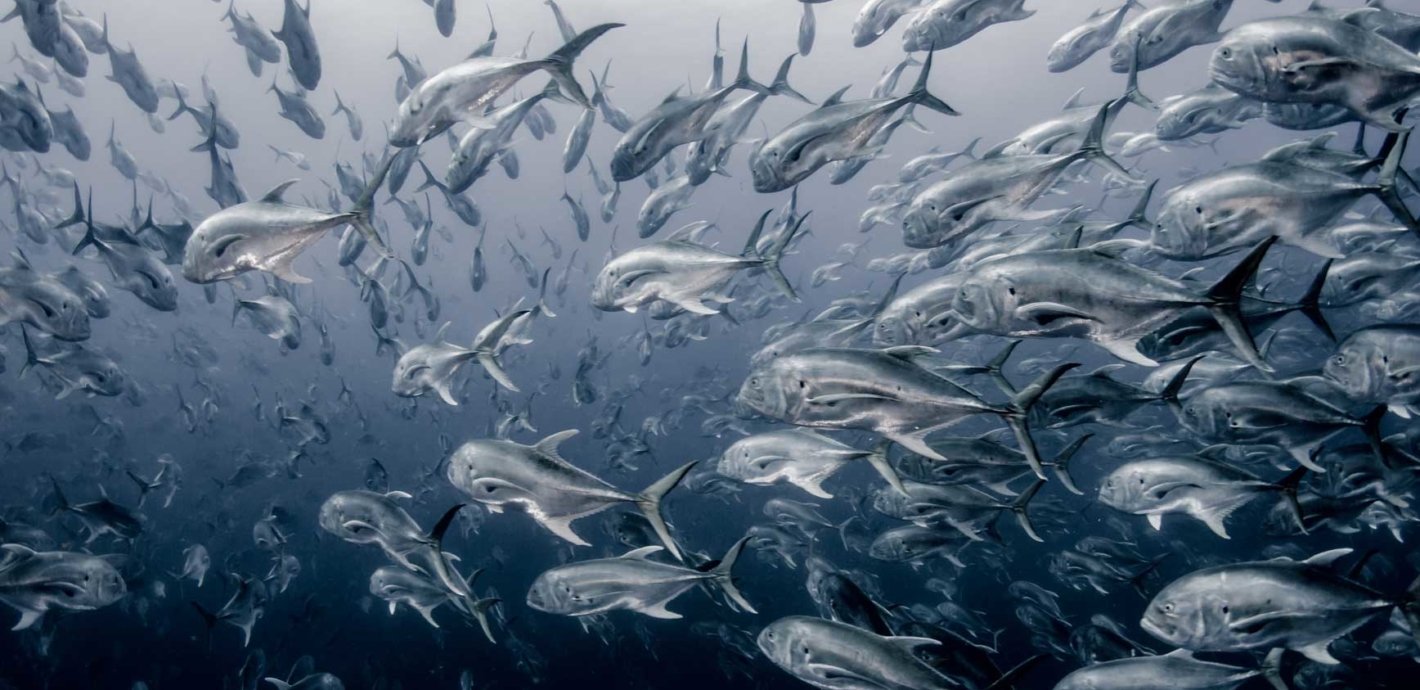When you think about sustainable, healthy seafood, you may picture fisherman line-catching trout splashing in pristine waters. Fish farms, on the other hand, likely bring to mind images of crowded swarms in murky pens.
And while the haze of distrust around aquaculture (fish farming) is justified by complex, global considerations, there are indications that small but important strides are being made toward producing fish that’s better for you and the planet.
Earlier this year, Whole Foods Market rolled out a new sustainable farmed salmon it brought to market with Blue Circle Foods and BioMar. In the same week, popular salad chain Sweetgreen announced it was adding farmed steelhead (a fish that resembles salmon but is actually a type of trout) to its menu, after the provider, Pacific Seafood, became the first farm of its kind to receive Best Aquaculture Practices (BAP) certification. “We’ve gone from about 700 certified facilities at the end of 2014 to 1,172 at the end of February 2016,” says Steven Hedlund, communications manager for Global Aquaculture Alliance, the organization behind BAP.
While certifications and standards vary in their criteria, sustainable fish farming generally minimizes disease, damage to surrounding ecosystems, and the amount of wild fish used as feed (in addition to using healthy feed alternatives). While creating systems that meet those standards is possible, they’ve generally been the exception to the rule in the industry, especially since much of the farmed seafood in the U.S. is imported from highly unregulated systems. Rather than helping with overfishing, fish farms sometimes use more wild fish per pound for feed than pounds of fish they produce, while also destroying surrounding ecosystems due to escaped fish and chemical and antibiotic pollution.
Related: Understanding the Science and Controversy of GMOs
In a 2010 TED Talk, Dan Barber, a renowned chef and advocate of sustainable farming, shed light on how one operation in southern Spain, Veta La Palma, set a gold standard for fish farming by creating a self-sustaining ecosystem in which fish feed on shrimp that feed on algae and no additional feed is required—and the process actually filters and cleans the river waters.
Transitioning all fish farms to that kind of eco-topia is a long shot, but innovations like sustainable feed used to raise the Whole Foods salmon and the forward-thinking farm design used to produce Sweetgreen’s Steelhead (and the fact that more farms are able to meet BAP’s requirements on things like disease and escape control) are encouraging developments.
They come at a crucial time, says Ryan Bigelow, program engagement manager for the Monterey Bay Aquarium (MBA) Seafood Watch program. “Most of the seafood we eat in the U.S. already is farmed,” he explains. “It’s not so much of a question of ‘should I eat farmed or wild fish?’ It’s a question of ‘how do we improve farmed fish if we’re going to all continue to eat fish?’”
Data supports that observation. According to a 2014 World Bank report, “Fish to 2030: Prospects for Fisheries and Aquaculture,” global aquaculture production grew from 5.2 million tons in 1981 to 62.7 million tons in 2011. A model used in the report predicts that by 2030, 62 percent of the fish eaten around the world will be farmed, and beyond that, farmed fish will dominate global supply.
So, how are some players addressing these issues, and does it mean you should reach for farmed fish anytime soon?
Why the Design of Fish Farms Matters
Many fish are farmed in net pens in the ocean, which leads to environmental issues like diseases passed to nearby wild fish, pesticides and antibiotics seeping into the surrounding water, and escaped fish that disrupt local ecosystems. Bigelow says there are simple innovations that help with many of these things, like improved nets to reduce escape, reducing the number of fish in pens to lessen the need for chemicals, as well as bigger creative solutions like using natural predators to combat sea lice, parasitic creatures that are often dealt with using pesticides. “There are little fish called lumpsuckers who go in there and eat the sea lice off the fish so you don’t have to use a chemical,” he explains.
Even better, there’s a growing emphasis on on-shore, contained farms that recirculate wastewater. “The fish can’t escape, sea lice and other pests can’t get in, there’s no interaction with predators, they’re able to use fewer chemicals and filter the water,” Bigelow says. “It’s a better system, and those are becoming more common.”
Some fish farms have taken other creative approaches, like in the case of the steelhead served at Sweetgreen. Pacific Seafood built its farm in a nutrient-deficient section of the Columbia River between two dams, and waste from the farm actually helps replenish river nutrients.
What Is the Best Feed for Farmed Fish?
Feeding farmed fish is another major challenge. In-demand fish like salmon are fed fishmeal and fish oil made from smaller fish caught in the wild, a process that often uses more fish per pound than it actually produces. (Not to mention the horrifying abuses tied to the feeder fish industry, like forced labor.)
“Salmon farming has been criticized for many years as a net protein loser rather than producer,” explains Carrie Brownstein, the seafood quality standards coordinator at Whole Foods, which developed its own industry-leading standards for farmed fish in 2007. It’s what makes their recent announcement big, since BioMar was able to create fish feed (oil) made from the trimmings of wild fish that had already been caught for human consumption. “I think it’s a real game changer because it demonstrates that salmon can be farmed in a way that doesn’t use more protein than they grow.” BioMar was also able to clean the oil to reduce contaminants diners may be wary of, like heavy metals and PCBs (polychlorinated biphenyls), that later end up in the fish.
Other farmed fish, like catfish and tilapia, require significantly less fishmeal, Bigelow adds. Shellfish like mussels and oysters filter plankton out of the water and don’t need feed at all.
Is Wild or Farmed Fish Better to Eat?
In the end, these steps are a tiny rosy microcosm of a fractured, confusing global system, and most farmed fish is still on MBA Seafood Watch’s “Avoid” list, says Bigelow. So how do you know what to throw on the grill in the meantime?
“When you’re purchasing the fish, find out where it comes from,” says culinary nutritionist Stefanie Sacks, author of What the Fork Are You Eating? “For wild fish, if you can’t buy it directly from a fisherman, you want fish that’s caught and processed in the U.S.” For farmed, she says, ask about contained recirculating systems to avoid fish that are being raised in contaminated, crowded waters and may contain pesticide and antibiotic residue. Of course, your local grocer won’t always know, and labeling is minimal, so your best bet is relying on third party tools like Seafood Watch’s Consumer Guides and on sellers that articulate their own high standards (like Whole Foods).
And don’t forget, Sacks says, “Eating some fish is better than eating no fish.” In other words, do your best to buy the healthy, sustainable option, but don’t let your food chain fears and uncertainties rob you of all the protein and omega-3s seafood has to offer.









Comments (0)